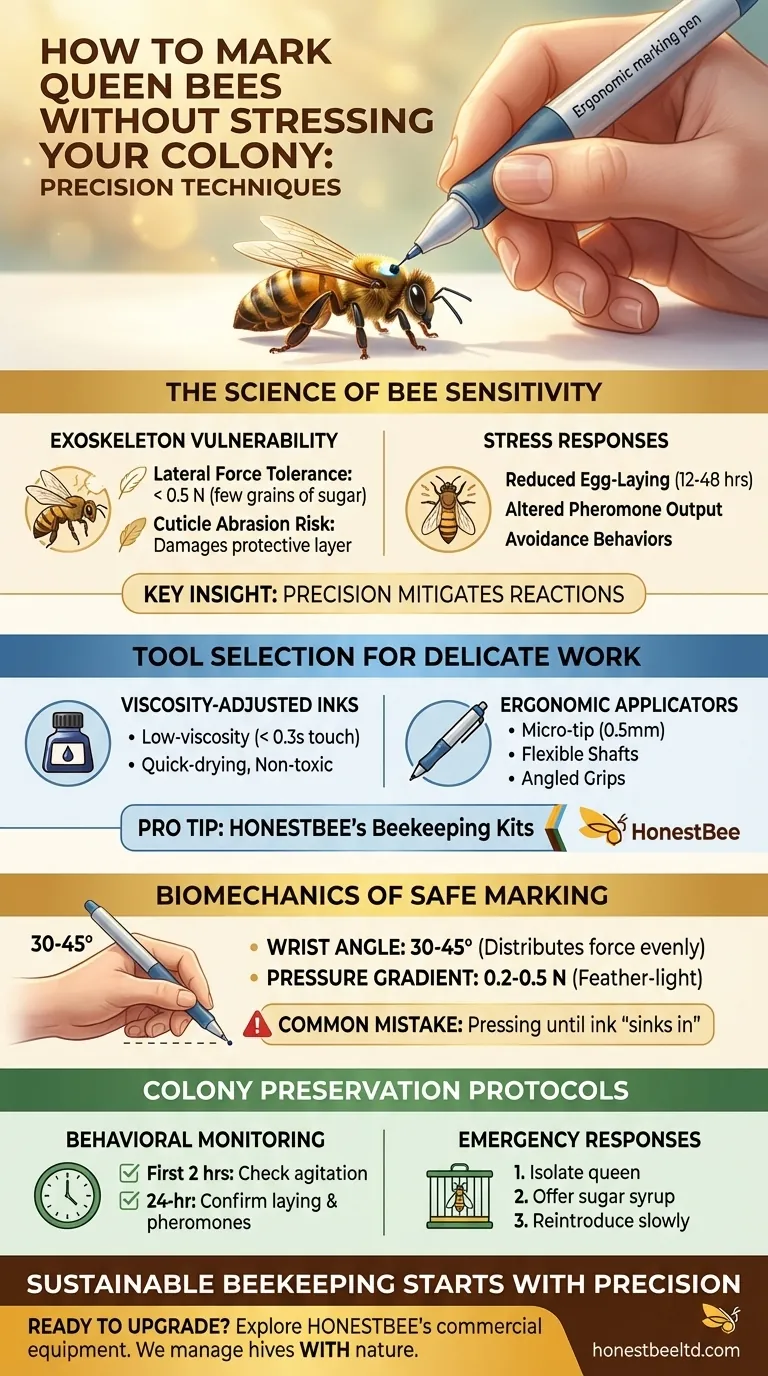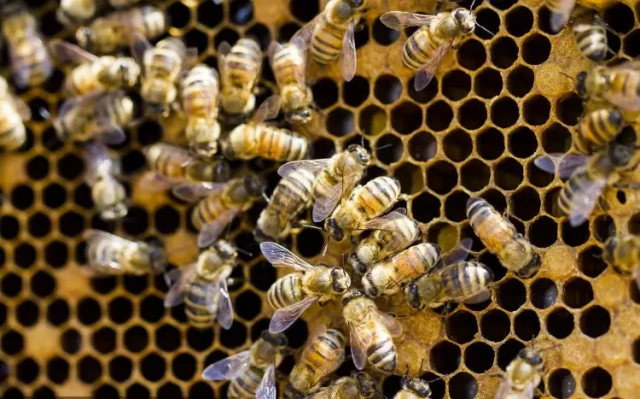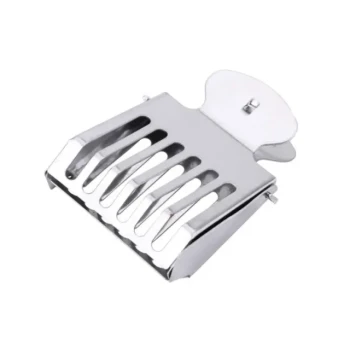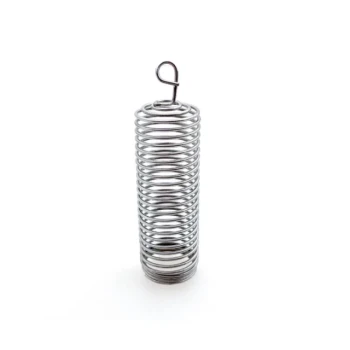For commercial beekeepers and apiary managers, queen marking is essential for hive management—but traditional methods risk colony disruption. This guide reveals science-backed techniques to mark queens with minimal stress, ensuring both visibility and hive health.
The Science of Bee Sensitivity: Why Gentle Marking Matters
Bees perceive pressure and chemical changes far more acutely than humans. Understanding their biological limits is the foundation of stress-free marking.
Exoskeleton Vulnerability Thresholds
A queen’s exoskeleton can withstand only minimal pressure before risking injury. Studies show:
- Lateral force tolerance: Equivalent to the weight of a few grains of sugar (under 0.5 newtons)
- Cuticle abrasion risk: Rough handling damages the protective lipid layer, increasing disease susceptibility
Stress Responses in Marked Queens
Marked queens may exhibit:
- Reduced egg-laying for 12–48 hours post-marking
- Altered pheromone output, potentially triggering supersedure impulses
- Avoidance behaviors (e.g., hiding in comb cells)
Key Insight: Precision tools and techniques mitigate these reactions, preserving colony stability.
Tool Selection for Delicate Work: Minimizing Physical Impact
The right equipment reduces handling time and mechanical stress.
Viscosity-Adjusted Inks for Single-Dot Adhesion
- Low-viscosity inks: Spread easily, requiring only a brief touch (under 0.3 seconds)
- Quick-drying formulas: Prevent smudging without needing blotting pressure
- Non-toxic pigments: Avoid disrupting queen pheromones (tested for bee safety)
Ergonomic Applicators for Tactile Control
- Micro-tip pens: 0.5mm nibs enable single-dot marking
- Flexible shafts: Absorb hand tremors during marking
- Angled grips: Reduce wrist strain during prolonged sessions
Pro Tip: HONESTBEE’s beekeeping kits include specialized markers designed for apiary-scale use, balancing speed and gentleness.
Biomechanics of Safe Marking: Movement Matters
Technique is as critical as tools. Optimize these physical factors:
Wrist Angle Optimization Strategies
- 30–45° pen angle: Distributes force evenly across the queen’s thorax
- Supported elbow posture: Stabilizes movements (bench edges or hive tools as arm rests)
Pressure Gradient Calibration
- Ideal range: 0.2–0.5 newtons (like holding a feather on your palm)
- Training hack: Practice on drone wings first—they mimic queen exoskeleton resistance
Common Mistake: Pressing until the ink "sinks in" increases injury risk. Let capillary action do the work.
Colony Preservation Protocols: Post-Marking Care
Monitor hives closely after marking to catch stress signals early.
Behavioral Monitoring Checklist
- First 2 hours: Check for agitated workers or queen balling attempts
- 24-hour follow-up: Confirm resumed egg-laying and normal pheromone trails
Emergency Responses for Accidents
If excessive pressure was applied:
- Isolate the queen in a cage with attendant bees for 1–2 hours
- Offer 1:1 sugar syrup to reduce worker aggression
- Reintroduce slowly at evening hive activity lulls
Prevention Focus: HONESTBEE’s wholesale beekeeping supplies include queen marking kits with force-calibrated tools to prevent mishaps.
Sustainable Beekeeping Starts with Precision
Marking queens shouldn’t trade short-term visibility for long-term colony health. By adopting these methods—backed by biomechanics and apian biology—you ensure productive hives and thriving queens.
Ready to Upgrade Your Apiary’s Tools?
Explore HONESTBEE’s commercial beekeeping equipment—designed for distributors and large-scale operations prioritizing bee welfare. From gentle markers to monitoring systems, we help you manage hives with nature, not against it.
Visual Guide

Related Products
- Queen Bee Marking Pen UNI Medium Point for Queen and Bee Marking
- Queen Bee Marking Pen POSCA Queen Marking Pens for Beekeeping Bee Markers
- Plastic Queen Marking Tube Cage with Plunger for Beekeeping
- Professional Engraved Round Hive Number Tags for Beekeeping
- Nicot Queen Rearing Kit for Beekeeping and Grafting in Nicot System
Related Articles
- How to Choose a Beekeeping Starter Kit That Protects Both Bees and Beekeepers
- How Honey Bee Colonies Reach Their Summer Peak: Science-Based Strategies
- How to Build a Smarter Beekeeping Tool kit: Strategic Tools for Every Hive Challenge
- The Beekeeper's Blind Spot: The Cognitive Ergonomics of a Veil
- How Handheld Queen Marking Cages Revolutionize Beekeeping Efficiency and Bee Welfare




















